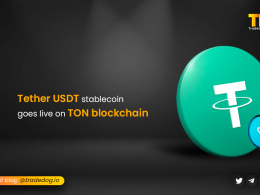Quick Links
In recent years, blockchain technology has become a big deal. It’s like a super-secure digital ledger used in various industries to solve problems. The most essential part of blockchain is something called “consensus mechanisms.” These are the rules that ensure that everyone who uses the blockchain agrees on what is happening.
This blog is all about understanding two important consensus methods: Proof of Work (PoW) and Proof of Stake (PoS). These methods are two different ways of making sure transactions are safe and accurate on a blockchain. Even though they have the same goal, they work in different ways and have different effects on how well the blockchain works, how eco-friendly it is, and how much control certain people have.
What is Proof of Work (PoW)?
Proof of Work (PoW) is one of the oldest and most well-known consensus mechanisms in blockchain technology. It was introduced by Bitcoin’s creator, Satoshi Nakamoto, in 2008. PoW was designed to solve the problem of trust and ensure the security of transactions on the Bitcoin network.
Working mechanism
Source: Alibabacloud
PoW operates like a competitive puzzle-solving game among network participants, known as miners. Miners use their computing power to solve complex mathematical puzzles. The first miner to find a solution broadcasts it to the network, which other participants then verify. This verified solution, known as a “block,” contains a group of transactions. Once verified, the block is added to the blockchain, and the miner who found the solution is rewarded with cryptocurrency tokens, like Bitcoin.
Key Features
- Security: PoW is highly secure because it requires a significant amount of computational power to alter the blockchain’s history. Any malicious actor attempting to manipulate the blockchain would need to control more than 50% of the network’s computing power, which is extremely difficult and costly.
- Energy Consumption: PoW is often criticized for its high energy consumption. The competitive nature of mining means miners use powerful computers that consume a lot of electricity to solve puzzles. This energy-intensive process has led to concerns about its environmental impact.
- Decentralization: PoW initially promotes decentralization because anyone with the necessary hardware can participate in mining. However, as mining becomes more competitive and resource-intensive, it has become dominated by large mining pools and specialized hardware, potentially centralizing control in the hands of a few.
What is Proof of Stake (PoS)?
Proof of Stake (PoS) is an alternative consensus mechanism in blockchain technology that differs from Proof of Work (PoW). PoS was proposed as a solution to some of the issues associated with PoW. It was first introduced in 2012, although various forms of PoS had been discussed earlier. Unlike PoW, where miners compete to solve puzzles, PoS relies on validators who are chosen to create new blocks and verify transactions based on the amount of cryptocurrency they “stake” or lock up as collateral.
Working mechanism
In PoS, validators are selected to create new blocks and validate transactions based on their “stake” in the network. Staking involves locking up a certain amount of the blockchain’s native cryptocurrency as collateral. Validators are chosen through a deterministic algorithm that often considers factors like the amount of cryptocurrency staked and how long it has been staked.
For example, if A holds 100 coins of a particular cryptocurrency and decides to stake them, she becomes eligible to validate transactions and create new blocks. Her chances of being selected as a validator increase with the amount of cryptocurrency she stakes and the duration for which she stakes it. If A is selected, she can validate transactions and earn rewards in the form of transaction fees and newly created tokens.
Key Features
- Energy Efficiency: PoS is known for its energy efficiency compared to PoW. It doesn’t require the massive computational power and energy consumption seen in PoW mining. Validators in PoS need an internet-connected device to participate.
- Scalability: PoS can scale more efficiently than PoW. Since validators don’t need to solve complex puzzles, transaction processing can be faster, making PoS blockchains more scalable for a more significant number of transactions per second.
- Decentralization: PoS can encourage decentralization as validators are chosen based on their stake. However, it’s essential to note that wealthier participants have a higher chance of being selected, which can lead to a different form of centralization where those with more cryptocurrency have more influence.
Comparative Analysis: Proof-of-Work Vs Proof-of-Stake
| Particulars | Proof Of Work | Proof Of Stake |
| Energy efficiency | High energy consumption | Energy-efficient than PoW |
| Security | Highly secure. | Security depends on the economic incentives of validators |
| Scalability | Less scalability due to a slower transaction rate. | Offers better scalability due to a faster transaction rate. |
| Adoption | Adopted by all initial blockchains | Adopted by newer blockchains |
Advantages and Disadvantages: Proof-of-Work Vs Proof-of-Stake
| Particulars | Proof Of Work | Proof Of Stake |
| Advantages | Security Proven Track Record | Energy EfficiencyScalabilityReduced Centralization Risk |
| Disadvantages | High Energy ConsumptionScalability ChallengesCentralization Over Time | Potential Wealth-Based CentralizationSecurity Reliance on Economic Incentives |
| Future development/improvement | Energy Efficiency SolutionsScalability SolutionsHybrid Models | Enhanced Decentralization MechanismsSecurity EnhancementsInteroperability |
Real-World Implications and Future Trends
Impact of PoW and PoS on Cryptocurrency Valuation and Investor Decisions:
- PoW: PoW-based cryptocurrencies like Bitcoin are often perceived as store-of-value assets due to their strong security and scarcity. Investors may favour these cryptocurrencies as long-term holdings, and their valuation can be influenced by network security, mining activity, and energy consumption.
- PoS: PoS-based cryptocurrencies may be seen as more environmentally friendly and scalable. Investors may choose them for transactional purposes or as a means to earn rewards through staking. Valuation can be driven by factors like the project’s adoption, technological advancements, and the attractiveness of staking rewards.
Environmental Implications:
- PoW: PoW’s energy-intensive nature has drawn criticism for its carbon footprint. As environmental awareness grows, there may be increased pressure on PoW-based projects to adopt more sustainable practices or transition to alternative consensus mechanisms. the Cambridge Bitcoin Electricity Consumption Index indicated that the annualized energy consumption of the Bitcoin network, which uses PoW, was close to 200 terawatt-hours (TWh), almost equivalent to the consumption of a country like Sweden.
- PoS: PoS is praised for its eco-friendliness, which aligns with the growing global focus on sustainable technologies. As a result, PoS may gain favor among investors and projects aiming to reduce their environmental impact. Ethereum’s PoW network, before its transition to PoS, consumed about 100 TWh annually, which is half that of Bitcoin’s but still quite substantial.
The Future of Blockchain Consensus Mechanisms:
- Hybrid Models: Many blockchain projects are exploring hybrid consensus mechanisms combining PoW and PoS elements. These models aim to leverage the security of PoW and the efficiency of PoS, offering a compromise between the two. Ethereum’s transition to Ethereum 2.0, which incorporates PoS alongside PoW, is a prominent example.
- Emerging Alternatives: New consensus mechanisms continue to emerge, addressing the limitations of both PoW and PoS. For instance, Proof of Authority (PoA), Delegated Proof of Stake (DPoS), and Proof of History (PoH) are gaining attention. These alternatives provide different solutions to scalability, security, and decentralization challenges.
- Interoperability: As the blockchain ecosystem expands, the need for interoperability between different blockchains becomes crucial. Cross-chain communication and interoperability protocols are being developed to enable seamless data and asset transfer between various blockchain networks.
Conclusion
In conclusion, this exploration of Proof of Work (PoW) and Proof of Stake (PoS) highlighted their distinct characteristics and impacts on blockchain networks. PoW relies on energy-intensive puzzle-solving for security, while PoS leverages validators’ stakes as collateral, emphasizing energy efficiency and scalability. Both have their advantages and disadvantages, influencing cryptocurrency valuations and investor decisions. Looking ahead, the future of blockchain consensus mechanisms may involve hybrid models, increased emphasis on sustainability, enhanced interoperability, and ongoing innovation to address the evolving needs of the blockchain and cryptocurrency landscape. These choices will continue to shape the trajectory of decentralized technologies and their role across various industries.









